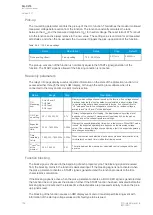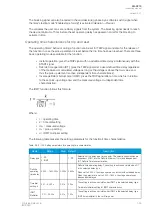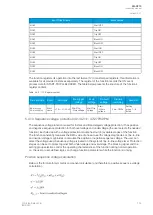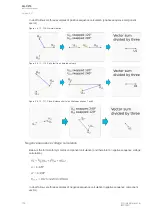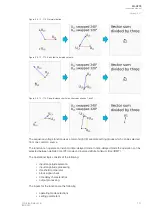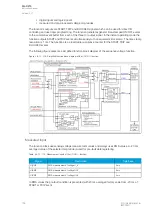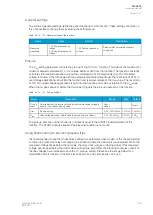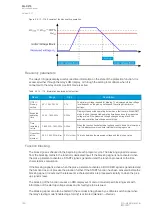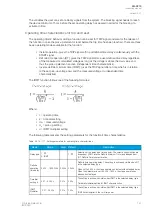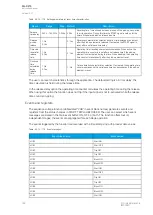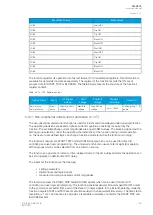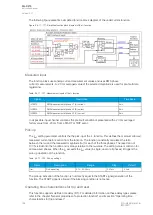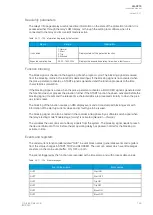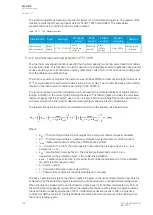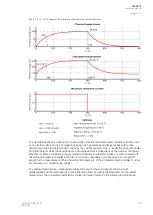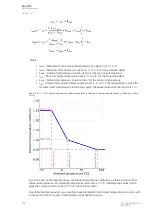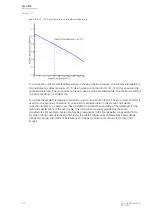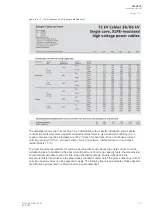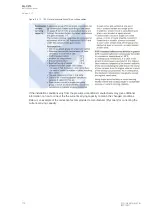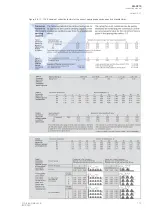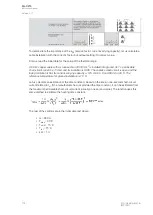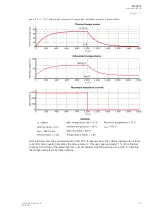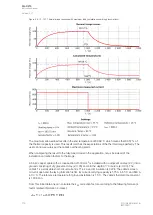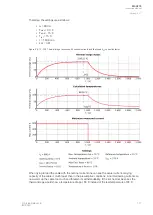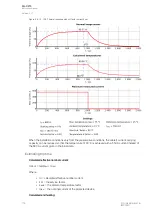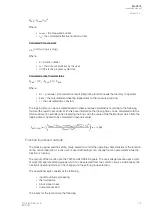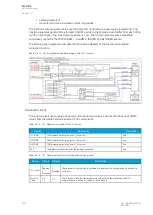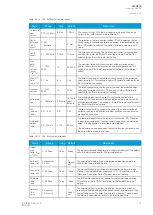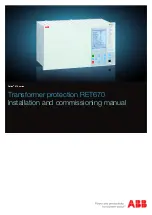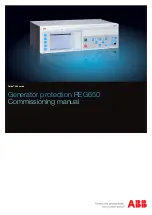
The function registers its operation into the last twelve (12) time-stamped registers. The register of the
function records the ON event process data for START, TRIP or BLOCKED. The table below
presents the structure of the function's register content.
Table. 5.4.11 - 125. Register content.
Date and time Event
Fault type
Pre-trigger
current
Fault
current
Prefault
current
Trip time
remaining
Used SG
dd.mm.yyyy
hh:mm:ss.mss
Event
name
L1-G…L1-L2-L3
Start/
Trip -20ms
current
Start/Trip
current
Start
-200ms
current
0 ms...1800s
Setting group
1...8 active
5.4.12 Line thermal overload protection (TF>; 49F)
The line thermal overload function is used for the thermal capacity monitoring and protection of cables
and overhead lines. This function can also be used for any single time constant application like inductor
chokes, certain types of transformers and any other static units which do not have active cooling apart
from the cables and overhead lines.
The function constantly monitors the instant values of phase TRMS currents (including harmonics up to
31
st
) and calculates the set thermal replica status in 5 ms cycles. The function includes a total memory
function of the load current conditions according to IEC 60255-8.
The function is based on a thermal replica which represents the protected object's or cable's thermal
loading in relation to the current going through the object. The thermal replica includes the calculated
thermal capacity that the "memory" uses; it is an integral function which tells this function apart from a
normal overcurrent function and its operating principle for overload protection applications.
The thermal image for the function is calculated according to the equation described below:
Where:
• θ
t%
= Thermal image status in percentages of the maximum thermal capacity available
• θ
t-1
= Thermal image status in a previous calculation cycle (the memory of the function)
• I
max
= Measured maximum of the three TRMS phase currents
• I
n
= Current for the 100 % thermal capacity to be used (the pick-up current in p.u., t
max
achieved in τ x 5)
• k
SF
= Loading factor (service factor), the maximum allowed load current in p.u.,
dependent on the protected object or the cable/line installation
• k
amb
= Temperature correction factor, either from a linear approximation or from a settable
ten-point thermal capacity curve
• e = Euler’s number
• t = Calculation time step in seconds (0.005 s)
• τ = Thermal time constant of the protected object (in minutes)
The basic operating principle of the thermal replica is based on the nominal temperature rise, which is
achieved when the protected object is loaded with a nominal load in a nominal ambient temperature.
When the object is loaded with a nominal load for a time equal to its heating constant tau (τ), 63% of
the nominal thermal capacity is used. When the loading continues until five times this given constant,
the used thermal capacity approaches 100 % indefinitely but never exceeds it. With a single time
constant model the cooling of the object follows this same behavior, the reverse of the heating when
the current feeding is zero.
A
AQ
Q-C215
-C215
Instruction manual
Version: 2.07
166
© Arcteq Relays Ltd
IM00040
Содержание AQ-C215
Страница 1: ...AQ C215 Capacitor bank protection IED Instruction manual ...
Страница 2: ......
Страница 297: ...Figure 7 4 179 Example block scheme A AQ Q C215 C215 Instruction manual Version 2 07 Arcteq Relays Ltd IM00040 295 ...
Страница 318: ...Figure 8 14 200 Device installation A AQ Q C215 C215 Instruction manual Version 2 07 316 Arcteq Relays Ltd IM00040 ...
Страница 347: ...10 Ordering information A AQ Q C215 C215 Instruction manual Version 2 07 Arcteq Relays Ltd IM00040 345 ...

